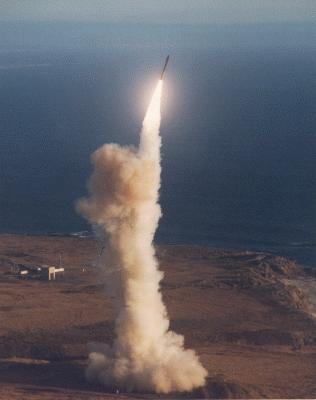RockIt
 A rocket is launched from a land-based site vertically with an acceleration
, with
. At an altitude
100km
above Earth's surface the rocket's boosters fail. How much time will pass (from the moment the boosters failed) before the rocket crashes? Air drag is ignored. The initial velocity is
0
.
A rocket is launched from a land-based site vertically with an acceleration
, with
. At an altitude
100km
above Earth's surface the rocket's boosters fail. How much time will pass (from the moment the boosters failed) before the rocket crashes? Air drag is ignored. The initial velocity is
0
.
This section requires Javascript.
You are seeing this because something didn't load right. We suggest you, (a) try
refreshing the page, (b) enabling javascript if it is disabled on your browser and,
finally, (c)
loading the
non-javascript version of this page
. We're sorry about the hassle.
The Rocket can be thought of as a particle.
We know the initial conditions and how the acceleration varies with time. We must find other physical characteristics of motion [velocity, time of motion{time taken for the motion}, law of motion{potion with respect to time}].After integrating the equation dv=adt and taking into account the initial conditions we find velocity as a function of time.
a = d t d v = α t 2 ⇒ d v = α t 2 d t ⇒ ∫ 0 v d v = ∫ 0 t α t 2 d t ⇒ v = α t 3 / 3
After integrating another time and applying the initial conditions we get displacement of the rocket as a function of time.
v = d t d x = α t 3 / 3 ⇒ d x = α t 3 / 3 d t ⇒ ∫ 0 h d x = ∫ 0 t α t 3 / 3 d t ⇒ h = a t 4 / 1 2
These laws are valid only up to the moment when the boosters failed. Let us determine the velocity of the rocket at that moment (this velocity will be the rocket's initial velocity for further motion).
Time taken to reach height h 0 , i.e, the height when the boosters fail:
t = 4 1 2 h 0 / α
Velocity at that height(i.e at h 0 ):
v 1 = ( α / 3 ) 4 ( 1 2 h 0 / α ) 3
Substitute the values of α and h 0 .
This gives v 1 = 1 2 . 1 k m / s , which exceeds the escape velocity of objects launched from the Earth, approximately 11.2 km/s.So, it won't return to Earth
ever.